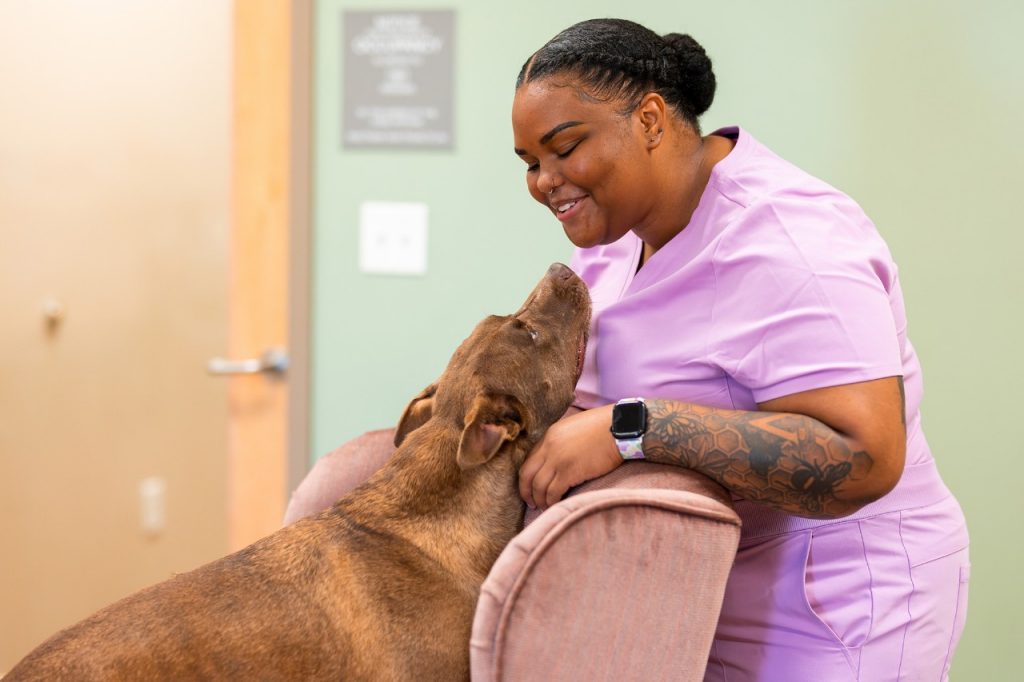
Prospective pet owners might be apprehensive about adopting an overweight animal that could experience joint problems or other conditions in the future, and an underweight animal could signal health problems or an expensive pet food bill.
Inspired by her shelter medicine clerkship between her second and third years as a veterinary student, Davis sought out another shelter clerkship with the idea that she would conduct a study on animals’ weights and their ability to be adopted. She soon ran into a problem — a very happy problem. Cats and dogs were getting adopted out before she could track their weights properly over time.
Instead, Davis pivoted to developing guidelines for each shelter so that cats and dogs will receive the appropriate amount of food to achieve or maintain a healthy weight.
Each shelter she works with has its own unique needs, and it can be a challenge to address the nutritional requirements of individual animals.
“One thing I discovered working with individual animals is that there is so much more to take into consideration, considering breed, age, and other diseases,” explained Davis. “For example, hounds in a stressful environment tend to lose more weight.”
Davis has been able to follow up with some of the animals that were adopted out, and their new owners are keeping the pets on the plan she designed for them.
Davis has signed on with a veterinary practice in her home state of New Jersey after graduation, but she intends on volunteering with local shelters. She hopes that she can inspire other veterinary students to do the same.
“This was a chance for me to help animals while also helping the community — and I got to cuddle with dogs every day!”
